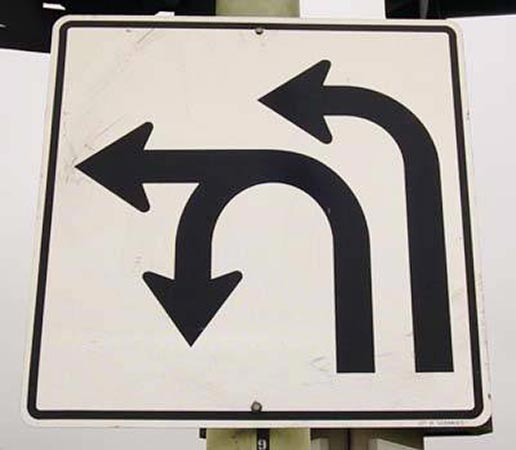How to Make a U-Turn

Signs will help you understand when it’s okay to make a U-turn.
While you may have covered U-turns in your drivers ed course, they are a driving maneuver that really needs to be practiced from behind the wheel to get down pat. Nevertheless, it always helps to have an idea of what you need to do. That’s why we’ve outlined the dos and don’ts for you. Just keep in mind that some of the rules for U-turns vary by state.
What Does It Mean to U-Turn?
U-turning is turning your car 180 degrees onto a street that goes in the opposite direction. Drivers make U-turns to go back in the direction they came.
When Is It Legal to Make a U-Turn?
Generally, you are allowed to make a U-turn if:
- There is no sign prohibiting it.
- There is a green left turn arrow or green light.
- You are in the far left lane.
- There is a “U-turn only” sign.
- You are going across a double yellow line (but only if it is safe and legal to do so).
- You are in a residential area and there are no vehicles approaching you within 200 feet.
- There is an opening in the center divider on a divided highway AND it’s not reserved for emergency or law enforcement vehicles.
When Is It Illegal to Make a U-Turn?
You are NOT allowed to make a U-turn under the following circumstances:
- When there is a “No U-Turn” sign posted
- When doing so could cause you to be hit by other vehicles
- When you are on a one-way street
- When you are unable to see 200 feet in each direction because obstacles are blocking your view
- When you are at or on a railroad crossing
- When you are on a divided highway that has a curb, two sets of double yellow lines, or other dividing section between you and the other side
- When you are in front of a fire station (you may not use a fire station driveway to turn around)
- When you are in business districts, you may only turn at intersections or openings for turns (unless there is a sign against it)
How to Execute a U-Turn
How to make a U-Turn? In order to successfully complete a U-turn, you will need to follow a few steps.
- Be sure that the path is clear (approaching vehicles should be more than 200 feet away and the crosswalk should be free of pedestrians).
- Turn on your left turn signal.
- Move straight forward, but keep your foot on the brake.
- Keep your car in the right side of your lane in preparation to swing to the left.
- When you have cleared the median/divider far enough, turn your steering wheel as far left as you can. Remember to brake during the beginning of your turn.
- As you begin to exit the turn, accelerate slightly.
- Once you have completed the turn, resume normal speed.
And there you have it! That’s all there is to it. Be sure you get plenty of practice, preferably at low-traffic times, when there are few cars around. You’ll be an expert in no time!










